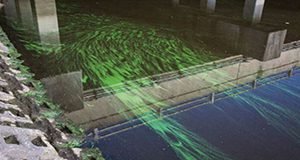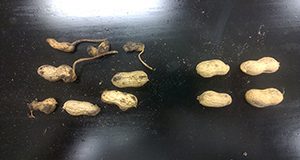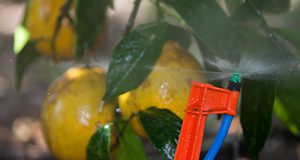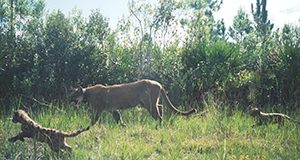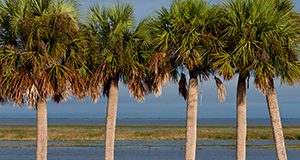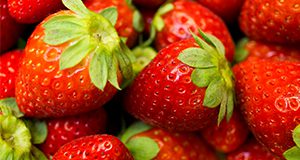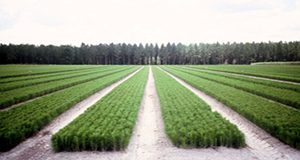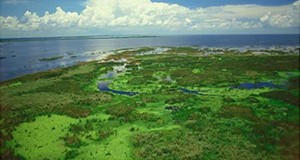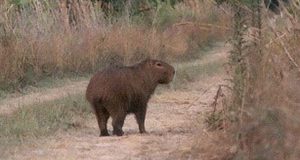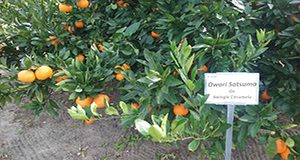Assessment-based pest management emphasizes the importance of evaluating the intensity of a pest problem before treating the problem. This 10-page fact sheet written by F.M. Oi, E. Weeks, J. Jonovich, and D. Miller and published by the UF/IFAS Entomology and Nematology Department explains the strategy and includes a decision flow chart to provide an easy-to-follow overview on how a German cockroach problem can be assessed and successfully managed with specific guidance for each of four levels described in the fact sheet. The levels described constitute an escalation protocol that may approximate the tiers in a LEED (Leadership in Energy and Environmental Design) pest-management plan and may meet the requirements of some “green” pest-management certification programs, depending on level.
http://edis.ifas.ufl.edu/in1190
Author: Susan Gildersleeve
Finger Lime: An Alternative Crop with Great Potential in South Florida
Cylindrical Australian finger limes (Microcitrus australasica) taste like a combination of lemon, lime, and grapefruit, come in a rainbow of colors, and have a texture like caviar. Like other citrus fruits, finger limes are nutritious, low in calories, and vitamin-rich. So far in the United States only California grows finger limes commercially, but this 4-page fact sheet written by Aditya Singh, Edward Evans, Jeff Wasielewski, Manjul Dutt, and Jude Grosser and published by the UF/IFAS Food and Resource Economics Department makes the case that exotic, colorful finger limes would likely grow well in Florida, where they would appeal to hoteliers and restaurants and to adventurous, health-conscious consumers on the lookout for a delicious new fresh fruit snack to try.
http://edis.ifas.ufl.edu/fe1033
The Future of Harmful Algal Blooms in Florida Inland and Coastal Waters
Microscopic algae in oceans and inland waters sometimes grow to excessive levels called “blooms.” Warmer water temperatures and increased nutrient levels exacerbate blooms, and when nutrients are high, temperature increases of just a few degrees cause exponential increases of algae and blooms. This 4-page fact sheet written by Karl Havens and published by the Florida Sea Grant College Program and UF/IFAS Extension explains why algal blooms can be harmful and provides advice for communities seeking to reduce nutrient levels in their lakes, streams, and other bodies of water. In a warmer future, harmful algal blooms will be much more challenging to control than they are today.
http://edis.ifas.ufl.edu/sg153
Management of Plant-Parasitic Nematodes in Florida Peanut Production
Nematodes, non-segmented roundworms, can cause serious yield suppression in peanut production. This 10-page fact sheet written by Zane J. Grabau and Donald W. Dickson and published by the UF/IFAS Department of Entomology and Nematology explains how to recognize a potential nematode problem in a peanut production, confirm it with an expert, and choose the best management tools to control the problem.
http://edis.ifas.ufl.edu/in1199
Handbook of Florida Water Regulation: 2016 Florida Water Bill
This handbook is designed to provide an accurate, current, and authoritative summary of the principal federal and state laws that directly or indirectly relate to agriculture. Written by Tatiana Borisova, Michael T. Olexa, and Jarrett Davis and published by the UF/IFAS Food and Resource Economics Department, this chapter of the handbook provides a basic overview of the Florida Water Bill.
http://edis.ifas.ufl.edu/fe1018
Handbook of Florida Water Regulation: Florida Springs and Aquifer Protection Act
This handbook is designed to provide an accurate, current, and authoritative summary of the principal federal and state laws that directly or indirectly relate to agriculture. Written by Tatiana Borisova, Michael T. Olexa, and Jarrett Davis and published by the UF/IFAS Food and Resource Economics Department, this chapter of the handbook provides a basic overview of the Florida Springs and Aquifer Protection Act.
http://edis.ifas.ufl.edu/fe1019
Growing Pomegranates in Florida: Establishment Costs and Production Practices

The study described in this 6-page fact sheet written by Feng Wu, Zhengfei Guan, and Gary Vallad and published by the UF/IFAS Food and Resource Economics Department provides a description of pomegranate production practices and preliminary cost estimates to inform investment and production decisions when growers look to diversify and grow pomegranate as a niche crop.
http://edis.ifas.ufl.edu/fe1024
Did I See a Panther?
Florida panthers can sometimes be confused with bobcats, dogs, and coyotes. This 4-page fact sheet written by Diane J. Episcopio, Elizabeth F. Pienaar, and Martin B. Main and published by the UF/IFAS Department of Wildlife Ecology and Conservation describes how to identify panthers by their physical characteristics and their tracks and explains what to do if you have seen a panther.
edis.ifas.ufl.edu/uw144
Sampling Palms for Lethal Yellowing and Texas Phoenix Palm Decline Phytoplasmas
In Florida, palms are an economically important group of trees in the nursery and landscaping industries. Phytoplasma diseases of palms are a major concern because they infect a wide variety of these valuable ornamental palms, and they are lethal. Once symptoms appear, trees begin to decline, frequently rapidly, and can die in as few as 3 to 5 months. This 4-page fact sheet written by Brian W. Bahder and Ericka E. Helmick and published by the UF/IFAS Department of Entomology and Nematology describes how to sample palms for disease and how to submit samples to the Vector Entomology Lab. Includes a table listing equipment and supplies and protocol for sampling palm trunk tissue.
http://edis.ifas.ufl.edu/in1197
Comparison of Labor Costs between Floridian and Mexican Strawberry Industries
Florida has the largest winter strawberry production in the United States. In recent years, Florida's industry has faced growing competition from Mexico. This 5-page fact sheet written by Feng Wu, Zhengfei Guan, and Melvin Garcia-Nazaraiega and published by the UF/IFAS Food and Resource Economics Department compares labor costs between Florida’s and Mexico’s strawberry industries.
http://edis.ifas.ufl.edu/fe1023
Import Growth and the Impact on the Florida Strawberry Industry
The United States is the second largest producer of strawberries after China, and Florida, along with California, accounts for about 98% of the total US production. In recent years, the US strawberry industry has become increasingly concerned with competition from Mexico. This 3-page fact sheet written by Zhengfei Guan, Dong Hee Suy, Hayk Khachatryan, and Feng Wu and published by the UF/IFAS Food and Resource Economics Department describes the impact of imported strawberries on the Florida strawberry industry and explains how the industry can adapt to meet the challenge.
http://edis.ifas.ufl.edu/fe1022
Securing Pet Food from Florida Black Bears and Coyotes
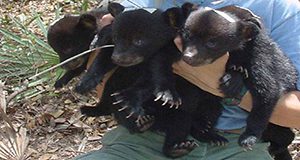
The Florida black bear and the coyote are both prevalent throughout the state of Florida. The number one cause of human-wildlife conflict for these two species are food attractants, including pet food. This 2-page fact sheet written by Kelley C. Anderson and Elizabeth F. Pienaar and published by the UF/IFAS Department of Wildlife Ecology and Conservation explains how to secure pets and pet food against both the Florida black bear and the coyote and keep people, pets, and wildlife safe.
edis.ifas.ufl.edu/uw437
Genetically Improved Pines for Reforesting Florida's Timberlands
Just as farmers plant the best-available varieties of crops that have been developed through many generations of breeding, forest landowners should plant the best-available genetically improved varieties of pines for reforestation of their timberlands. This 8-page fact sheet written by Timothy L. White, Mary L. Duryea, and Gregory L. Powell and published by the UF/IFAS School of Forest Resources and Conservation explains how planting genetically improved varieties of pines can increase the productivity, health, and value of reforested Florida timberlands.
edis.ifas.ufl.edu/fr007
An Overview of Strawberry Production in Mexico
This 5-page fact sheet written by Feng Wu, Zhengfei Guan, J. Jaime Arana-Coronado and Melvin Garcia-Nazariega and published by the UF/IFAS Food and Resource Economics Department provides an overview of Mexican strawberry production with an emphasis on the production in Central Mexico.
http://edis.ifas.ufl.edu/fe1014
Handbook of Florida Water Regulation: Soil and Water Conservation Districts
This 2-page fact sheet written by Michael T. Olexa, Tatiana Borisova, and Jarrett Davis and published by the UF/IFAS Food and Resource Economics Department is part of a handbook designed to provide an accurate, current, and authoritative summary of the principal federal and Florida state laws that govern agriculture. This chapter provides an overview of soil and water conservation districts (SWCDs), explains their purpose and structure, and describes some of the agency partnerships SWCDs make.
edis.ifas.ufl.edu/fe1017
Status of Capybaras (Hydrochoerus hydrochaeris Rodentia: Hydrochaeridae) and Potential for Establishment in Florida
Would you know what to do if you saw a two-foot-tall, 100-pound exotic rodent strolling through your neighborhood? It’s highly unlikely, but, depending on your location, not absolutely impossible. Capybaras, the world’s largest rodents, are native to South America but have been spotted in the state of Florida and may have potential to establish populations here. This 5-page fact sheet written by Brandon Parker, C. Jane Anderson, Christina Romagosa, Samantha Wisely, Daniel Pearson, John Seyjagat, and Katherine Ashley Sayler and published by the UF/IFAS Department of Wildlife Ecology and Conservation describes capybaras, explains how they got to Florida, and shows where the semiaquatic, herbivorous rodents have been sighted so far.
edis.ifas.ufl.edu/uw438
Florida Strawberry Production Costs and Trends
To help growers and policy makers understand how and why strawberry production costs have changed over time, this 5-page fact sheet written by Zhengfei Guan, Feng Wu, and Alicia Whidden and published by the UF/IFAS Food and Resource Economics Department presents cost information collected over a five-year period, analysis of the cost structure of Florida strawberries, and an examination of the trend of changing costs along with the factors underlying the trend.
http://edis.ifas.ufl.edu/fe1013
Satsuma Mandarin Budget and Profitability Analysis for North Florida
This 16-page analysis written by Kevin R. Athearn, Peter C. Andersen, Bent V. Brodbeck, Lei Lani L. Davis, Clay Olson, Daniel K. Fenneman, Matthew Lollar, Derek Farnsworth, and Michael Perez and published by the UF/IFAS Food and Resource Economics Department provides research-based information and a description of satsuma mandarin markets, production costs, and potential returns for citrus growers who are considering establishing a satsuma grove in north Florida. Its purpose is to serve as a reference and model for growers to create their own enterprise budgets and make financial projections. An enterprise budget estimates revenues, costs, and net returns for a particular crop or farm enterprise to help growers assess the economic viability and risk of an enterprise, compare enterprises, and evaluate production or marketing changes. The budget and financial analysis may assist prospective and current satsuma growers, agricultural consultants, and lenders with planning and decision making.
http://edis.ifas.ufl.edu/fe1030
Foliar or Bud Nematodes in Florida Strawberries
Foliar or bud nematodes are little-known nematodes that caused “crimp disease” in Florida strawberries in the early 1900s. Recently, these foliar nematodes have been observed again in the state, and seem to have come in with transplants from outside Florida. Foliar/bud nematodes can devastate a crop of strawberries. Plants become stunted with curled up leaves, and produce few or no flowers or fruits. This 7-page fact sheet written by J. Desaeger and J. Noling and published by the UF/IFAS Department of Entomology and Nematology provides much-needed information on these little-understood pests, summarizing the different types of foliar nematodes, their biology, life cycle, damage symptoms, survival strategies, dissemination, and management options.
edis.ifas.ufl.edu/in1184
Impervious Surface Thresholds and the Pace to Plant Technique for Planting Urban Red Maple Trees
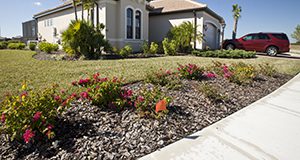
A foundation of integrated pest management (IPM) in urban landscapes is to put the right plant in the right place. This preventive tactic can reduce plant stress, pest infestations, and subsequent pesticide applications. Many urban tree species have more insect and mite pests in urban landscapes than in surrounding natural areas. This is due in part to stress created by impervious surfaces like roads and sidewalks that make the air hot and the soil dry. For red maples (Acer rubrum), more impervious surface area adds stress and worsens tree condition. This 4-page publication written by Adam G. Dale, Steven D. Frank, Elsa Youngsteadt, Barbara Fair, Julieta Sherk, and Michael Just and published by the UF/IFAS Department of Entomology and Nematology focuses on selecting red maple planting sites that will help reduce tree stress and scale insect pests by maximizing surfaces permeable to water.
http://edis.ifas.ufl.edu/in1185


